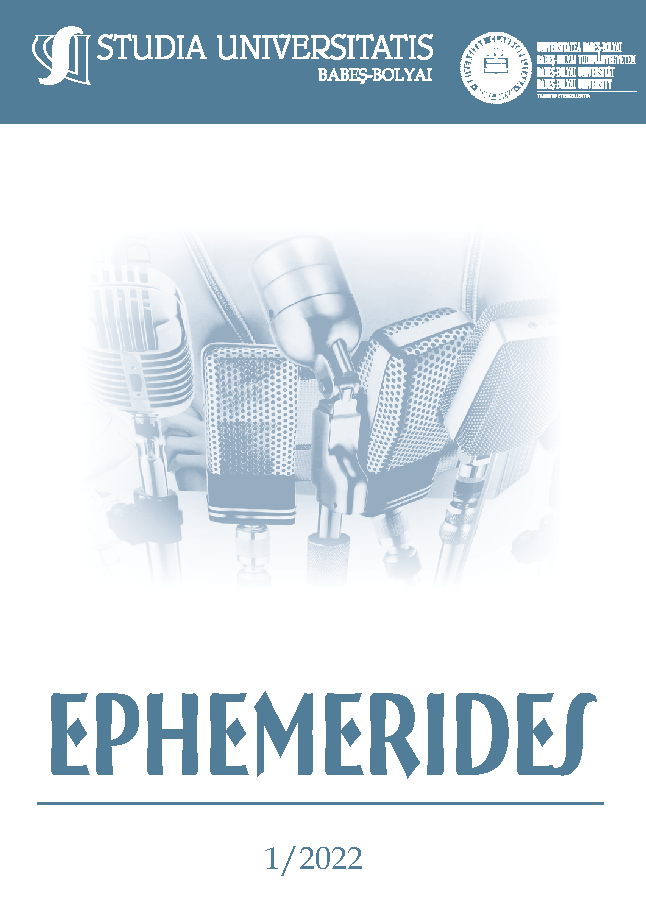Typologies of social structures in virtual communities – case study on mobile platforms
DOI:
https://doi.org/10.24193/subbeph.2022.1.02Keywords:
Digital anthropology, virtual communities, social structures and networks, online platforms, persistent worlds, massively multiplayer online, mobile, digital ethnology, gamesAbstract
This study (originally published in Romanian) aims to define certain typologies of individuals involved in virtual communities, more specifically in persistent online worlds. In this case the focus is on a case study applied to the platform called state of survival dedicated to the mobile devices segment. It is a platform that combines in one application various types of gaming with several ways of communicating and socializing. The fact that this game has become extremely popular at the beginning of the pandemic correlated with periods of severe lockdown puts it in a unique socio-cultural context which makes it extremely interesting from the point of digital anthropology research.
The methodology in use is rather traditional as a set of ethnographic and anthropological tools but adapted to contemporary necessities for studying virtual communities. The aim is to develop a form of social group taxonomy outlining their specific characteristics and eventually even the social norm.
The results do not just shape the parameters described above but also involve game mechanics and behavioral patterns as well as the way in which individuals perceive this activity and or their involvement with the virtual world that is correlated with their level of immersion. In this particular context qualitative methods are suitable, but they also have some limitations, it is almost impossible to carry out any statistical research at the level of the general population due to the structure of the platform and the way it functions. On the other hand, one can cover very well certain segments on a very detailed level in order to point out relevant aspects of such virtual worlds.
References
Bartle, Richard. A Self of Sense. 2003. http://www.mud.co.uk/richard/selfware.htm
Boyd, Danah M. and Ellison, Nicole B. Social Network Sites: Definition, History, and Scholarship. In Journal of Computer-Mediated Communication. Nr.13, 2007.
Boyd, Danah M. Streams of Content, Limited Attention: The Flow of Information through Social Media. New York: Web2.0 Expo, 2009.
Boyd, Danah M. Taken Out of Context. Berkeley: University of California, 2008. PhD Thesis.
Castells, Manuel. The Power of Identity. Vol. 2. Malden: Blackwell, 2004.
Castells, Manuel. The Rise of the Network Society. Cambridge: Blackwell, 1996.
Castronova, Edward. “The Right to Play”. 2003. http://www.nyls.edu/pdfs/castronova.pdf.
Freud, Sigmund. Five lectures on psycho-analysis. New York, NY: Norton. 1961.
Green, M. C. Trust and Social Interaction on the Internet. In Joinson, A.; McKenna, K. Y. A.; Postmes, T. & Reips U.-D. (Eds.). The Oxford Handbook of Internet Psychology. Oxford: Oxford University Press, 2007.
Kim, Amy Jo. Community Building on the Web: Secret Strategies for Successful Online Communities. Cambridge: Peachpit Press, 2000.
Kraut, R. E., & Johnston, R. E. Social and emotional messages of smiling: An ethological approach. Journal of Personality and Social Psychology, 1979, 37, 1539–1553.
Levine, R. V., & Norenzayan, A. The pace of life in 31 countries. Journal of Cross-Cultural Psychology, 1999, 30, 178–205.
Livingstone, Sonia. Audiences and Publics: When Cultural Engagement Matters for the Public Sphere. Portland: Intellect, 2005.
Mizuko Ito, Daisuke Okabe, and Misa Matsuda. Personal, Portable, Pedestrian: Mobile Phones in Japanese Life, Cambridge: MIT Press, 2005.
Mizuko Ito, Introduction. In KazysVarnelis (Ed.) Networked Publics. Cambridge: MIT Press, 2008.
Rheingold, Howard, The Virtual Community: Homesteading on The Electronic Frontier. New York: HarperPerennial, 1994.
Rheingold, Howard. Smart Mobs: The Next Social Revolution. Cambridge: Perseus, 2002.
Rheingold, Howard. The Virtual Community: Homesteading on the Electronic Frontier. Londra: MIT Press, 2003.
Rosenhan, D. L. On being sane in insane places. Science, 1973, 179, 250–258.
Turckle, Sherry. Computational Technologies and Images of the Self. Ohio: Ohio State University Press, 2001.
Wallace, Peter. The Psychology of the Internet. Cambridge: Cambridge University Press, 1999.
Wilkins, A. “Happier than Non-Christians”: Collective emotions and symbolic boundaries among evangelical Christians. Social Psychology Quarterly, 2008, 71, 281–301.
Downloads
Published
How to Cite
Issue
Section
License
Copyright (c) 2022 Studia Universitatis Babeș-Bolyai Ephemerides

This work is licensed under a Creative Commons Attribution-NonCommercial-NoDerivatives 4.0 International License.






